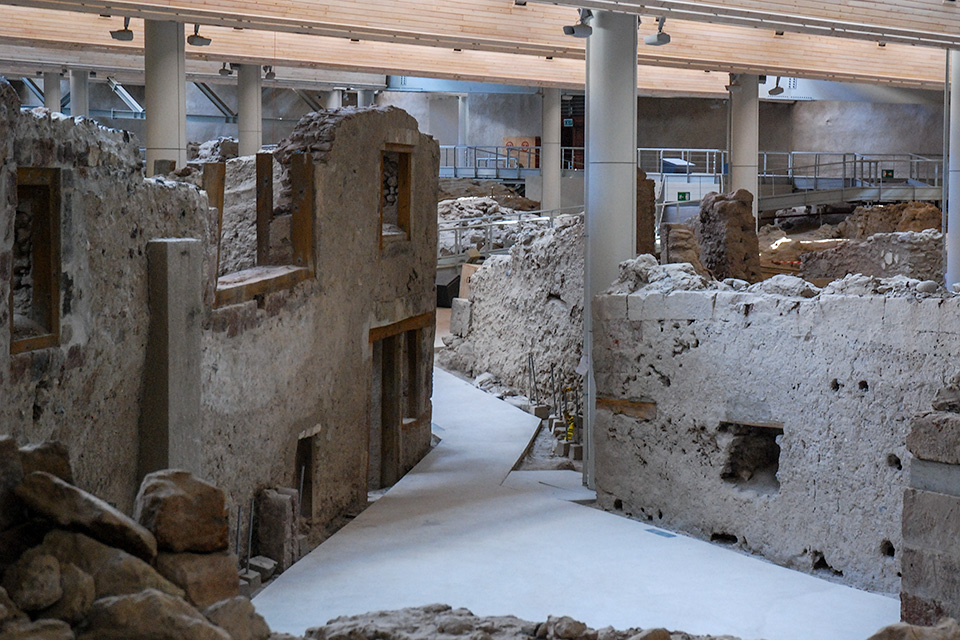Santorini island news
Archaeological Site of Akrotiri Reopens to the Public
After the completion of seismic safety checks on the roof of the Akrotiri Archaeological Site, the green light has been given for its reopening to the public. As announced by Dimitris Athanasoulis, Director of the Cyclades Antiquities Department, the Akrotiri site will open its doors again on Friday, April 11, 2025.
Mr. Athanasoulis stated: “On April 11, 2025, the Akrotiri Archaeological Site on Santorini will reopen to the public. The seismic activity in the Cyclades led to the temporary closure of 20 Cycladic museums and prompted protective measures for the exhibits. All exhibitions were dismantled and reassembled by the staff of the Cyclades Antiquities Department, with the aim of safeguarding the artifacts, and subsequently reopening the museums in time for the start of the tourist season. Additionally, emergency measures were taken to reinforce ruins and monuments.”
The last site to reopen was Akrotiri, due to the particularly demanding safety inspection of its shelter, in accordance with security protocols. With the support of the Minister of Culture, the Technical Chamber of Greece (TEE) took action, and approval was granted for the safe reopening of Akrotiri.
We would like to remind visitors that the Museum of Prehistoric Thira reopened on March 26, and Ancient Thira on March 27. For the summer opening hours and entrance fees for museums and archaeological sites in Santorini, please click here.

Discovering Akrotiri: A Glimpse into Santorini’s Ancient Past
The Akrotiri Archaeological Site is one of the most significant archaeological sites in Greece, offering a rare glimpse into the life of a thriving Minoan civilization that existed over 3,600 years ago. Often referred to as the “Pompeii of the Aegean,” Akrotiri was an advanced and prosperous settlement until it was buried under volcanic ash following the catastrophic eruption of Thera (Santorini) around 1600 BCE.
Excavations at the site have revealed well-preserved remains of houses, streets, and public buildings, complete with beautiful frescoes that provide a vivid picture of the island’s rich culture and lifestyle. The site is believed to have been a major center of trade and artistic expression, with its people engaging in seafaring activities and trading with other ancient civilizations, including Egypt and the Near East.
What makes Akrotiri truly remarkable is the extraordinary preservation of its structures and artifacts. The volcanic ash that buried the city preserved everything from pottery to furniture, and even the wooden roofs of houses, offering a rare insight into the daily life of its inhabitants. Many of these artifacts can be seen today in the Museum of Prehistoric Thira in Fira, where they provide valuable insights into the ancient Aegean world.
The excavation site itself is an impressive sight. Visitors can walk through the well-preserved ruins, exploring the streets and buildings that were once home to a thriving community. The site is covered by a modern roof to protect it from the elements, allowing guests to experience this ancient city in safety and comfort.

